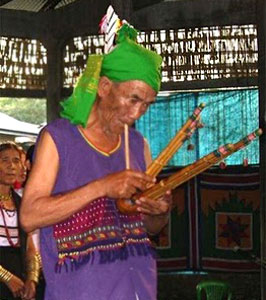 Ancient History of Kuki Tribes is reflected in two ways. While the origin of the tribe has been largely discussed within the legendary stories of the land; the historical presents of the tribal community is verified with the excavations made by a number of historians who locate the tribe since the stone age or Neolithic age that rounds up to 10,000BC and before. This tribe along with local dialects have been also mentioned in the Great epics of Mahabharata which marks its presence in the ancient India.
Ancient History of Kuki Tribes is reflected in two ways. While the origin of the tribe has been largely discussed within the legendary stories of the land; the historical presents of the tribal community is verified with the excavations made by a number of historians who locate the tribe since the stone age or Neolithic age that rounds up to 10,000BC and before. This tribe along with local dialects have been also mentioned in the Great epics of Mahabharata which marks its presence in the ancient India.
Ancient History of Kuki Tribes marked its presence in Indian subcontinent somewhere nearly 500 century BC which has been mentioned in the early texts of Ancient India. Much has been described in the ancient texts of Vedas and great epic of Mahabharata which can be regarded as authentic source of history. Along with this reference of Kuki tribes can also be traced in the local legendary stories which describe their migration and creation of a new community called the Kuki tribes. The origin of Kuki tribes has been largely located in the legendary chronicle of the land which takes the community back to the times of Noimangpa and Chongthu, the earliest fathers of the community and the legendary story that revolves around the great cave of Khul; Gulheipi the great snake and Lhaw, the lion which has been mentioned and accepted by a number of Scholars. However there has been some variations regarding their original; settlement. While some believe that the tribe made a south westerly migration to the sub Himalayan regions of north-eastern India and north- western Myanmar. At present the Kuki tribes are scattered in other parts of north eastern Indian States. Overall the historians mainly trace the location of the kuki Tribes in Ancient India through the excavation of various regions. The excavations predict that the tribe must have travelled from the south-eastern tracts to this region with a typical culture of carrying `T` shaped polished celt used as an axe or spade used for cultivating land or felling trees. Then they moved towards south westerly direction which is towards present day West Bengal- Orissa border carrying trends of Austric culture which later on formed the base of Indian culture and civilisation based on assimilation and blending.
Ancient History of Kuki Tribes along with this can also be traced within the writings of Vedas and Great epic of Mahabharata which are the earliest written texts of ancient India. Within Mahabharata the region along with its tribe was largely referred through Chittrangda who was the Nag daughter of the tribal king of Manipur- Ulupi and Kirata. This reflects the Indianisation of the subcontinent which was received with a lot of grace. The existence of these tribes during ancient days explains the presence of Hinduism in the state which has travelled from ancient days of Indian History. After this the tribe played a major role during the British rule in India which not only affected the culture of Kuki tribes but also their religion. The advent of British rule brought Christianity in the region which reformed some of the superstitions of the tribe. The tribe which is predominantly followers of superstitious black magic and local rituals got some reformations with the new religion.
Thus, Ancient History of Kuki tribes has been more or less traced within the excavations of Historians as well as within the historical literature of ancient India.
















